 If you are new to WordPress, make sure you read our overview of WordPress themes. We’ve written a comprehensive article that explains what themes are and how using themes can be cost-effective and time-saving for business owners.
If you are new to WordPress, make sure you read our overview of WordPress themes. We’ve written a comprehensive article that explains what themes are and how using themes can be cost-effective and time-saving for business owners.
This tutorial will show you how to easily upgrade a theme to its latest version inside your dashboard.
Updating WordPress Themes – Best Practices Checklist

Before updating your WordPress themes, we recommend going through the checklist below.
1. Back Up Your Site Fully
Backing up your website before making any updates to your site is essential. This way, if things don’t go as planned, you can always restore your web site or blog to its former configuration.
If you don’t want to perform manual backups, there are many free and paid plugins you can use. Learn about a WordPress backup plugin that can fully automate your site backups here:
2. Check The Theme Update Notes
When WordPress upgrades its software to a new version, this can affect the functionality of certain themes. Depending on the theme you are using, there may be a changelog file accompanying an update which provides an overview of new features, improvements, bug fixes or important changes in the new theme version.
If the theme changes seem irrelevant or unimportant, you can skip the update. Otherwise, you should update.
3. Test The Theme
If you can, it’s a good idea to check the theme before installing it on your site.
![]()
Typically, web service providers will set up a test site where they can test the latest version of the theme, track any bugs and verify that all plugins are working fine with the new theme before applying and activating it on a live site.
If you manage your own website, you can set up a test WordPress site on a subdomain or a separate domain with the same configuration settings (e.g. plugins) and play with the new theme versions on your test site before applying it to your main website.
4. Search Online
Before updating your theme, it’s a good idea to search online to see if anyone has reported any issues with the new theme version.
You can type the theme name and version into Google, and search the theme developer’s support forum (many developers offer this for paid themes, and even for some free plugins).
5. Use Child Themes For Heavily Customized Themes
If you have made extensive customizations to your existing WordPress theme files, upgrading your theme may result in your custom modifications being overwritten. To prevent losing your theme modifications, therefore, we recommend you learn how to create “child themes”.
A WordPress child theme is a theme that inherits the functionality of another theme, called the parent theme, and allows you to modify, or add to, the functionality of the parent theme. When you update the “parent theme”, all customizations get preserved through the “child theme.”
If you plan to customize your theme files, then we recommend becoming familiar with the use of child themes, especially if you use a theme that gets regularly updated. You can learn more about child themes by searching online, or visit the WordPress Codex child theme page here:
![]()
As you will see below, the actual process of updating a WordPress theme is very easy. What can feel slightly bothersome is the preparation involved prior to upgrading.
Some people don’t upgrade their WordPress themes regularly, while many upgrade without going through some or all of the steps listed in the section above. As mentioned earlier, the above are “best practice” methods for ensuring problem-free upgrades. Ultimately, as a website owner, it is your responsibility to protect your digital assets.
Upgrading Themes In WordPress – Tutorial
Updating your WordPress themes from the WP dashboard is easy.
Log into your WordPress administration area …
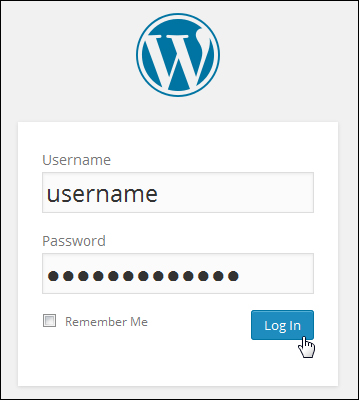
Depending on which theme(s) you have installed on your website, you may receive an occasional alert in your dashboard that new theme versions are available and require updating …
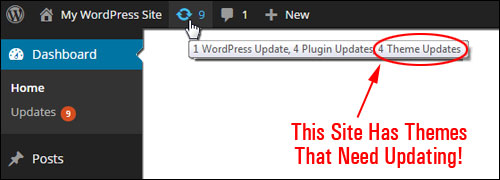
Updating a WordPress theme in your dashboard is quite a simple process. You can update your WordPress themes from the “Themes” section, or the “Updates” area.
Updating WordPress Themes From The “Themes” Screen
You can see which themes need updating by going to your Themes area.
Choose Appearance > Themes in your WordPress dashboard menu …

This opens up the “Themes” screen …

Themes with new versions display an “Update Available” message over their thumbnail image …

Locate the theme you want to update and click on the “Update Available” message.
When the theme details window opens up, click on update now …
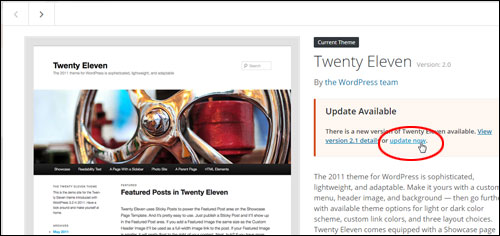
WordPress automatically updates the theme in seconds …
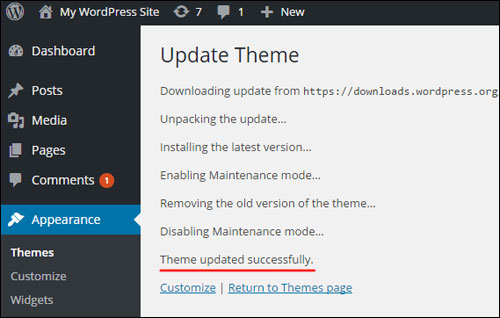
Your theme is now updated …
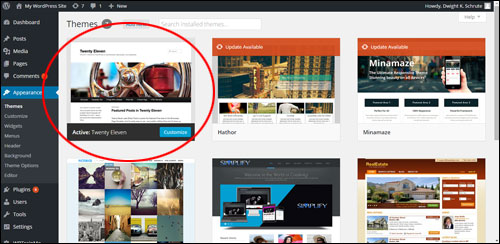
Repeat the process described above to update all of your remaining themes, or use the method described below to bulk upgrade multiple themes at once.
Updating Your Site Themes Via The “Updates” Section
Update your WordPress themes using the “Updates” page as shown below:
To view all themes on your website that require updating, click on Dashboard > Updates …
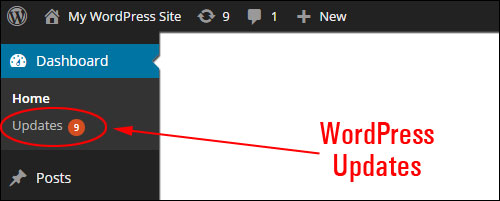
This brings up the Updates screen. Scroll down to the Themes section …
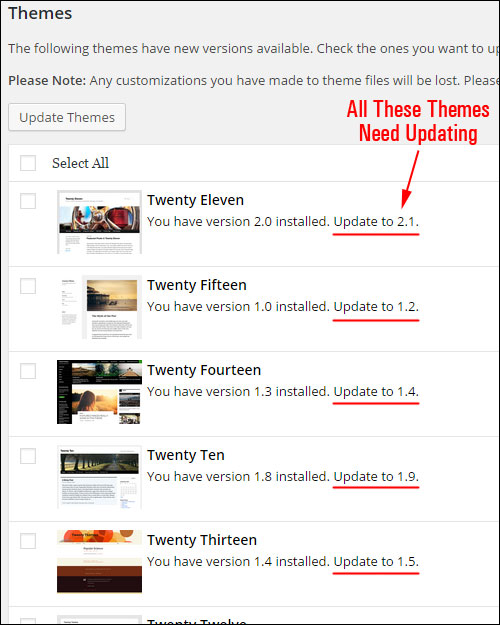
Check the box next to all the themes you want to update and click on Update Themes to complete the bulk upgrade process …

WordPress will automatically update all of the selected themes …

Congratulations! Now you know how to upgrade your WP theme from your dashboard.
***
"Wow! I never knew there's so much to learn about WordPress! I bought one of the WordPress for Dummies three years ago, such authors need to be on this course!" - Rich Law, Create A Blog Now